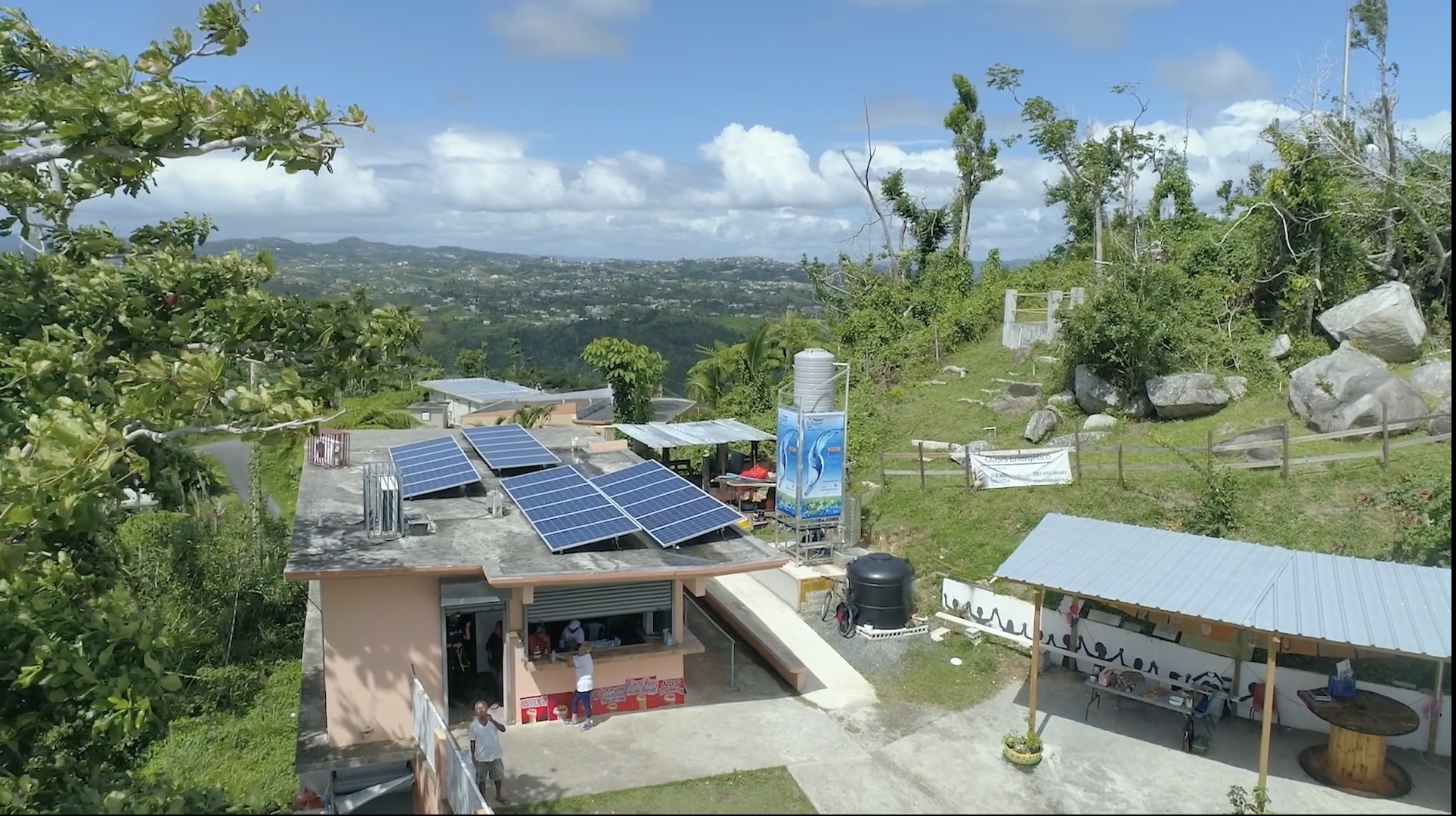Puerto Rico's energy solution lies right on top of our roofs. Humacao, PR (Photo: Sierra Club)
On the first anniversary of the worst disaster in Puerto Rico’s history, the island is still covered by Hurricane Maria’s mourning veil.
Puerto Rico finally announced the storm’s true death toll — 2,975 lives, 50 times higher than originally reported, amid the federal government’s neglect and arrogance, the incompetence of local government officials, and the apathy of the rest of the country.
“This is not a number; it’s people who will never see the light of day, and many of them died because of neglect,” said San Juan’s mayor, Carmen Yulín Cruz.
The wounds inflicted by Maria run deep, not only visible on the island’s face, but more importantly, in Puerto Ricans’ souls.
“Not all of us can leave,” says Elizabeth Chapman, a Río Grande resident of 53 whose mom, Angela, later emigrated to Texas. Angela's house, along with some 60,000 others, was destroyed by the hurricane. Even worse, FEMA has rejected assistance to more than half of those who lost their homes, leaving tens of thousands of Puerto Ricans at the mercy of the next Maria.
“Some of us must stay so we can push all this pa’lante (forward),” bravely adds Elizabeth.
The exodus from the island has been devastating. According to a City University of New York study, Puerto Rico could lose 470,000 of its 3,2 million inhabitants between 2017 and 2019 due to Maria, which caused up to $95 billion in damages on an island that was already crushed by public debt.
This diaspora is impacting everyone back home, including the youngest. The Luis M. Santiago School in Toa Baja is barely recuperating from the hurricane destruction; and its director, Sara Reyes, is aware climate change is triggering unprecedented damage and urges us all to learn from this tragedy.
“After this experience,” she says, “we know it’s very likely that all this will happen again. Maria has been a great teacher.”
All too many, however, are not listening to the teacher. And the state of the island’s electric grid is evidence of that. The Puerto Rico Electric Power Authority (PREPA) finally restored power to the entire island almost a year after the catastrophe. Yet the grid remains weak.
“It’s fragile,” José Sepúlveda, PREPA’s distribution director, told Business Insider. “If something like Maria returns to this island, we are going to have problems.”
PREPA, nevertheless, insists on rebuilding a significant part of the system through very expensive gas-burning power plants, which would hinder energy independence and worsen monsters like Hurricane Maria.
But this monster carries a silver lining with it. Maria offers a unique opportunity to completely rebuild Puerto Rico’s obsolete electrical system with a resilient network of solar energy microgrids. This decentralized alternative would turn the island into the country’s leader in clean, renewable energy that would benefit the entire island’s population.
The greatest obstacle to push this pa’lante is the Trump administration. After treating the victims of Maria like second-class citizens and recklessly minimizing the severity of the catastrophe, Donald Trump congratulated his cabinet’s performance in Puerto Rico, giving himself a perfect “10” in his response to the crisis.
"When I left the island, after the storm hit, they had anywhere from six to 18 deaths," he said, as if that had any relevance in the final assesment of his catastrophic intervention. And even more disturbing is the revelation that the Trump administration diverted $10 million meant for the Federal Emergency Management Agency to U.S. Immigration and Customs Enforcement to fund more detention centers for asylum seekers.
That perfect "10" doesn’t belong to Mr. Trump. It belongs to the Puerto Rican people, who, after withstanding the worst natural U.S. catastrophe in a century, are still standing and pushing pa’lante.
You can join #TeamPuertoRico and demand action from the administration to protect the island from climate change and the greed of fossil fuel companies.
